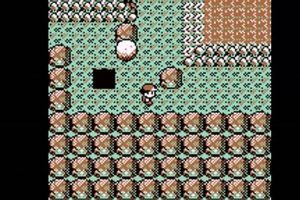Conditions that alter a Pokmon’s ability to battle are a fundamental aspect of the core gameplay. These ailments can impact a creature’s attributes, actions, or even its continued participation in an encounter. For example, paralysis reduces speed, while burns inflict damage over time.
Understanding and utilizing these conditions is critical for strategic success. They can create opportunities to exploit weaknesses, control the pace of battle, or even neutralize powerful opponents. Their implementation has been a consistent element of the franchise since its inception, shaping competitive play and influencing in-game decision-making.
The following sections will delve into the specifics of major battle conditions, examining their mechanics, applications, and strategies for both inflicting and mitigating their impact on a Pokmon’s performance.
Strategic Application
Effective utilization of battle conditions can significantly enhance a Pokmon Trainer’s strategic advantage. The following tips outline key considerations for implementing these conditions effectively.
Tip 1: Prioritize Status Affliction Based on Opponent: Analyze the opposing Pokmon’s type, stats, and move set to determine the most debilitating condition. Paralysis is often effective against fast, physical attackers, while burn can cripple strong physical sweepers.
Tip 2: Leverage Secondary Effects: Some moves inflict status ailments alongside damage. This provides both immediate impact and long-term strategic advantage. Moves like Scald have a chance to burn, dealing damage and applying a persistent condition.
Tip 3: Exploit Status-Inflicting Abilities: Several Pokmon possess abilities that automatically inflict conditions upon contact. Abilities such as Static (paralysis upon physical contact) or Flame Body (burn upon physical contact) can turn the tide of battle unpredictably.
Tip 4: Protect Against Self-Inflicted Conditions: Moves such as Flare Blitz or Head Charge can inflict recoil damage and potentially burn the user. Consider the risks and benefits before utilizing such high-risk, high-reward moves.
Tip 5: Status Stack Strategically: While certain conditions such as paralysis and sleep are mutually exclusive, combinations of status effects can severely hinder the opposition. For instance, inflicting poison followed by confusion can significantly deplete an opponent’s health and control.
Tip 6: Be Mindful of Status Immunities: Certain types and abilities confer immunity to specific conditions. Electric-type Pokmon are immune to paralysis, while Water-types cannot be burned. Adapt strategies accordingly.
Tip 7: Utilize Held Items for Status Prevention and Cure: Items such as Lum Berries or Chesto Berries can cure specific battle conditions. Items like a Leftovers can provide healing to offset the effects of poison or burn damage. Investing in held items adds layers of strategy and planning to your team.
Mastering the strategic application of these conditions offers a substantial advantage in Pokmon battles. By understanding the nuances of each ailment and tailoring strategies accordingly, Trainers can overcome challenging opponents and achieve victory.
The article will continue exploring these conditions with a deeper dive into individual status effects.
1. Burn
Burn is a detrimental battle condition within the broader framework of Pokmon status effects. It is typically inflicted by Fire-type moves or abilities, and its primary effect is a consistent reduction of the afflicted Pokmon’s Hit Points (HP) at the end of each turn. Unlike merely reducing HP, burn also reduces the Attack stat by 50% of the burnt Pokemon; thus hampering Physical attacks. This dual effect makes it particularly effective against physical attackers.
The significance of burn lies in its ability to simultaneously weaken offensive capabilities and impose a continuous damage penalty. A prime example is its impact on Pokmon reliant on physical attacks, such as Garchomp or Tyranitar. A burn significantly reduces their damage output, and the constant HP drain puts them at a disadvantage in prolonged battles. Furthermore, burn can be tactically employed to prevent setup strategies, where a Pokmon attempts to increase its stats to sweep the opposing team.
Understanding burn mechanics is crucial for both offense and defense. Offensively, burn can cripple opposing physical attackers, while defensively, immunity or moves like Heal Bell become valuable assets. Mitigation strategies, such as the use of held items like Lum Berry, can provide a one-time cure. The strategic application and understanding of burn’s effects are integral to mastering Pokmon battles, highlighting the interconnectedness of individual status conditions within the overall ecosystem of battle mechanics.
2. Freeze
Freeze represents a complete incapacitation battle condition within the framework of Pokmon status effects. Unlike paralysis or burn, freeze entirely prevents the affected Pokmon from taking any action, rendering it virtually useless until the condition is removed. Its impact on battle strategy is considerable, making it a highly sought-after, albeit relatively rare, status to inflict.
- Complete Incapacitation
Freeze completely halts a Pokmon’s ability to execute moves. This effect is absolute; the frozen Pokmon cannot attack, defend, or use any item. A frozen Pokmon is essentially removed from the battle until thawed. Moves that can inflict freeze include Ice Beam and Blizzard, but their probability of inflicting the status is typically lower than other status-inducing moves. The complete shutdown of a Pokmons capabilities is a significant strategic advantage.
- Thawing Mechanics
The thawing process is not guaranteed. At the end of each turn, there is a chance that the frozen Pokmon will thaw out naturally. The probability of thawing is typically around 20%, leaving the Pokmon vulnerable for multiple turns. Certain moves, like Flame Wheel, can thaw the user when used, providing a risky yet potentially rewarding strategy. Additionally, held items such as the Aspear Berry can be consumed to instantly thaw out the affected Pokmon.
- Move Interactions
Several moves interact directly with the frozen state. As previously mentioned, Flame Wheel can thaw the user. Furthermore, moves like Freezy Dry deal four times the normal damage to Frozen Pokemon. Such interactions add layers of complexity to battle strategies, requiring anticipation and tactical adaptation based on the current battle conditions.
- Type Immunities and Abilities
Ice-type Pokmon are immune to the freeze condition. Abilities like Magma Armor prevent the user from being frozen, providing valuable protection against Ice-type attacks. Understanding these immunities is vital for team composition and anticipating opponent strategies. Failure to account for these factors can lead to critical strategic errors.
The freeze condition, due to its potentially long duration and complete incapacitation, is a powerful, albeit chance-reliant, tool in Pokmon battles. Its rarity is balanced by its impact; a frozen Pokmon is a liability until thawed. Mastering the strategic application and understanding the thawing mechanics are crucial for capitalizing on opportunities and mitigating the risks associated with the freeze condition.
3. Paralysis
Paralysis, as a core component of Pokmon status effects, fundamentally alters a Pokmon’s battle capabilities by inflicting two primary penalties: a reduction in Speed and a chance of complete inaction each turn. The condition is typically induced by Electric-type moves like Thunder Wave or abilities such as Static. Its influence on battle strategy stems from disrupting the standard turn order and limiting the affected Pokmon’s offensive output. For example, a swift attacker like Jolteon, normally capable of outspeeding and defeating opponents, becomes significantly less effective when paralyzed, allowing slower Pokmon to strike first. The importance lies in shifting the advantage from faster, offensive Pokmon to slower, more defensive ones.
The practical significance of understanding paralysis extends to team building and strategic decision-making during battles. Players often prioritize moves or abilities that induce paralysis to control the pace of battle and neutralize threats. For instance, a defensive Pokmon might utilize Thunder Wave to paralyze an opposing sweeper, effectively mitigating its offensive power and creating opportunities for teammates to set up or sweep. Furthermore, knowledge of paralysis mechanics informs the selection of held items or abilities that grant immunity or provide a cure, such as the Lum Berry or the ability Limber. Understanding paralysis is not merely about inflicting the condition but also about anticipating and countering its effects.
In conclusion, paralysis holds a central position within the broader landscape of Pokmon status effects, impacting both individual Pokmon and the overall battle dynamic. By understanding its causes, effects, and countermeasures, players can leverage this status condition to gain a strategic advantage. The challenge lies in predicting opponent strategies and adapting one’s own tactics to maximize the benefits of paralysis while minimizing its drawbacks. The careful consideration of paralysis as a key status effect contributes significantly to mastery of the game’s strategic elements.
4. Poison
Poison, as a crucial element within the domain of Pokmon status effects, functions as a persistent affliction that depletes a Pokmon’s Hit Points (HP) over time. Inflicted typically by Poison-type moves or abilities, its primary effect is a gradual reduction of the affected Pokmon’s HP at the end of each turn. The damage inflicted increases in a state known as “badly poisoned.” For instance, moves like Poison Powder or Toxic can induce this condition. The critical significance of poison lies in its capacity to impose a consistent attrition effect, gradually wearing down the opponent’s HP while requiring them to either endure the damage or expend resources to cure the condition. Poison is often a strategic choice against Pokmon with high defense or HP.
The practical application of understanding poison mechanics extends to both offensive and defensive strategies. Offensively, poison can be utilized to secure a victory against opponents with stalling tactics or recovery moves, ensuring their inevitable defeat. Defensively, players must consider countermeasures such as using antidotes, held items like Lum Berries, or employing Pokmon with abilities that grant immunity to poison, such as Steel-types or Pokmon with the Immunity ability. Strategies and decision-making during battles, considering poison’s implications, are essential skills for a trainer. A paralyzed opponent is a sitting duck, but a poisoned opponent suffers HP depletion and will suffer losses even if switched out of battle.
In summary, poison serves as a substantial component in the broader context of Pokmon status effects, offering strategic depth through its attrition-based damage mechanism. Comprehending its infliction, effects, and countermeasures allows players to manipulate the battle’s tempo and exploit vulnerabilities in opposing teams. Effective utilization and mitigation of poison are essential skills for any trainer seeking competitive success. Failing to account for poison can lead to defeat through the slow and steady attrition of vital HP.
5. Sleep
Sleep, a prominent status effect, renders a Pokmon entirely inactive, precluding any actions for a variable duration. Moves like Sleep Powder or Rest induce this condition. The affected Pokmon cannot execute attacks, use items, or switch out until it awakens. The importance lies in its ability to completely neutralize a threat, providing a window of opportunity to set up, heal, or eliminate other opposing Pokmon. This state of forced inactivity presents a significant strategic advantage, allowing players to dictate the flow of battle.
The practical significance of understanding Sleep extends to both offensive and defensive tactics. Offensively, sleep can incapacitate a formidable opponent, such as a powerful sweeper, allowing a player to prepare a counter-strategy or eliminate supporting Pokmon without immediate reprisal. Defensively, comprehending Sleep’s mechanics necessitates anticipating and mitigating its effects. Abilities like Insomnia grant immunity, while held items like Chesto Berries provide a one-time awakening. The move Sleep Talk allows a sleeping Pokmon to randomly use one of its other moves while still asleep, offering a limited degree of functionality. Strategies for predicting or negating Sleep are crucial for maintaining battlefield control. The move “wake-up slap” becomes more effective if targeted at a sleeping pokemon.
In summary, Sleep functions as a potent status condition within the context of Pokmon battles, capable of completely altering the dynamics of a match. Its capacity to neutralize threats and create opportunities for strategic maneuvering is invaluable. Mastering Sleep’s application, and anticipating its effects, is essential for competitive success and underscores the interconnectedness of all status effects within the game’s mechanics. Effective utilization, in addition to its causes and effects are significant factors of mastery.
6. Volatility
Volatility, in the context of Pokmon status effects, refers to a set of temporary conditions that disrupt a Pokmon’s actions and behavior during a battle. These conditions, unlike persistent statuses such as paralysis or burn, typically have limited duration and often result in unpredictable outcomes. Understanding volatility is crucial for strategizing and predicting battle flow.
- Confusion
Confusion causes a Pokmon to occasionally strike itself in its attack, inflicting damage. This self-inflicted damage uses the Pokmon’s Attack stat against its Defense stat. Confusion has a limited duration, measured in turns, making it a temporary impediment. Moves like Confuse Ray induce this effect, and its unpredictable nature can disrupt carefully planned strategies, leading to unexpected setbacks. For example, a confused sweeper may waste valuable turns damaging itself instead of attacking the opponent.
- Infatuation
Infatuation occurs when a Pokmon becomes attracted to an opponent of the opposite gender. While infatuated, the Pokmon has a 50% chance of being unable to attack each turn due to being lovestruck. The move Attract is the primary means of inducing this condition. Infatuation can significantly hinder an opponent’s offensive capabilities, especially in prolonged battles. However, its effectiveness is contingent on the opponent’s gender composition, rendering it useless against genderless Pokmon or those of the same gender.
- Leech Seed
Leech Seed plants a seed on the opponent, causing it to lose HP each turn, with the drained HP being transferred to the user of Leech Seed. This condition provides a form of passive healing while simultaneously inflicting damage on the target. Leech Seed is particularly effective in stalling strategies, allowing the user to gradually wear down the opponent while sustaining its HP. Grass-type Pokmon are immune to Leech Seed, making type matchups a crucial consideration.
- Taunt
Taunt prevents the target Pokmon from using status moves for a limited number of turns. This forces the opponent to rely solely on damaging moves, disrupting strategies that involve setting up stat boosts, healing, or inflicting status conditions. Taunt is valuable for shutting down defensive walls or preventing opponents from using support moves, thereby controlling the battle’s momentum.
These volatile conditions, each with unique mechanics and implications, add layers of complexity to Pokmon battles. Mastering their application and understanding their potential impact is essential for developing effective strategies and adapting to the dynamic nature of combat. Utilizing volatile status effects adds a layer of risk but opens up many strategic options to disrupt the opponent, highlighting why volatile status is a consideration in competitive team building.
Frequently Asked Questions
This section addresses common inquiries regarding battle conditions and their impact on strategic gameplay.
Question 1: What distinguishes a major battle condition from a volatile condition?
Major battle conditions, such as paralysis or burn, persist even after a Pokmon is switched out of battle. Volatile conditions, like confusion or infatuation, are temporary and cease when the Pokmon is switched out.
Question 2: Are there any battle conditions that can stack on a single Pokmon?
While a Pokmon can only be afflicted with one major battle condition at a time (e.g., it cannot be both paralyzed and burned), it can simultaneously suffer from a major condition and multiple volatile conditions.
Question 3: How does the effect of paralysis on Speed work in practice?
Paralysis reduces a Pokmon’s Speed stat to 25% of its original value, significantly hindering its ability to act before the opponent. In previous generations, the speed reduction was 50%. A paralysis also has a chance to prevent a pokemon from attacking.
Question 4: What happens if a Pokmon is burned and then has its Attack stat lowered further by a move like Growl?
The burn condition reduces the Attack stat by 50% to start. Additional Attack stat reductions from moves like Growl are applied after this initial reduction. They can stack and diminish attack but cannot rise above 50% reduced.
Question 5: How is the damage calculated from poison and badly poison?
In a non-terastalized state, Poison deals 1/8 of max HP while Badly Poison deals increasing damage each turn, starting at 1/16 of max HP and adding another 1/16 each turn to a max of 15/16 of max HP at turn 15. A Terastallized Pokemon will have those numbers changed to Poison dealing 1/16 of max HP and Badly Poison starting from 1/32 of max HP and adding another 1/32 each turn to max out at 31/32 max HP at turn 31.
Question 6: Are there any abilities that interact with the sleep condition in a unique way?
Yes, abilities like Insomnia and Vital Spirit prevent a Pokmon from being afflicted with sleep. Comatose causes the pokemon to always be asleep.
A thorough understanding of these status conditions, along with strategic responses and their underlying rules, is vital for maximizing a player’s performance. By considering these factors, the efficacy of in-game moves, team matchups, and held items can all be optimized in accordance with the given situation.
The subsequent section will explore strategies for team composition and battling under specific status conditions.
Conclusion
The strategic importance of battle conditions cannot be overstated. Understanding the mechanisms, applications, and countermeasures associated with each status effect is crucial for success in competitive battling. From the debilitating effects of paralysis to the attrition-based damage of poison, each condition presents both opportunities for exploitation and threats that must be mitigated. Proficiency in leveraging these conditions to control the flow of battle is what distinguishes the novice from the master strategist.
Mastery of pokemon status effects is an ongoing pursuit. Continual evolution of strategic thinking ensures competitive advantage. Future developments in game mechanics will undoubtedly introduce new facets to these elements, requiring unwavering dedication to stay ahead. The impact of these conditions extends beyond individual battles, influencing team composition, move selection, and overall approach to the game. Continued exploration and refinement of these skills is essential for long-term success.







